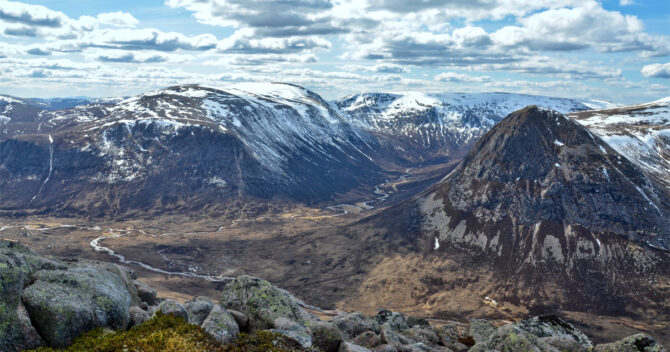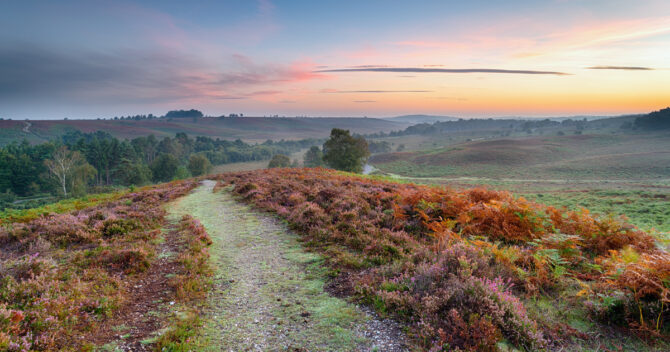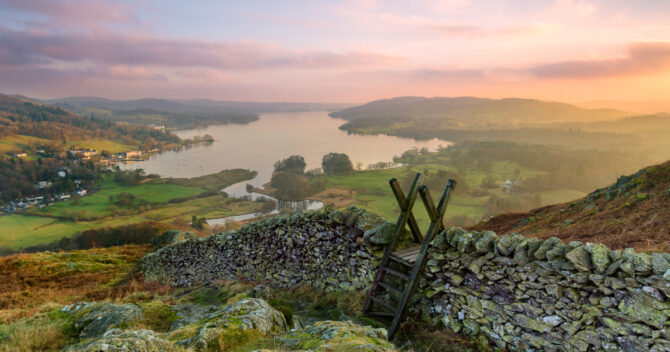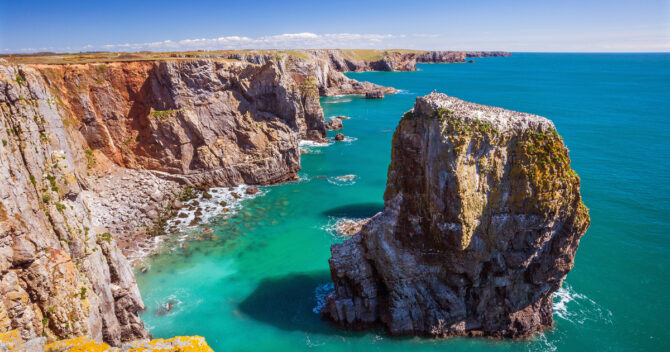 Shutterstock / LightField Studios©
Shutterstock / LightField Studios©As it’s Love Parks Weeks (running till Aug 5), we thought we’d share our love of green spaces by revisiting this great feature by Janey Swanson. It celebrated the 70th anniversary of our National Parks welcoming visitors to the UK’s most beautiful landscapes.
How It All Began
From dramatic mountains to wild moorlands, National Parks are places where tranquillity, adventure, nature and breath-taking views can be enjoyed by all. Britain’s first ever National Park – the Peak District National Park – welcomed its first visitors in 1951.
“National Parks were born out of the need to rebuild the nation’s health and environment after World War Two,” Sarah Fowler, CEO of the Peak District National Park, explains. “However, a young widow from Sheffield, Ethel Haythornthwaite, was instrumental in the creation of Britain’s National Parks.
“Ethel’s husband didn’t return from World War One and she found solace from her heartbreak in the landscape of the Peak District.
“As she walked across moors, Ethel realised how being in the countryside could improve mental and physical wellbeing. And she devoted her life to protecting Britain’s beautiful landscapes. Ethel founded the Council for the Protection for Rural England (CPRE). Which, in the 1930s, was closely involved in campaigning for the introduction of National Parks in the UK.”
Sparked A Demand
At the same time, the increasing industrialisation and urbanisation of Britain had sparked a demand from working-class residents of Sheffield and Manchester for public access to the surrounding privately owned countryside.
“In those days, Britain’s northern cities were dirty, sooty places. And many of those who lived and worked there wanted to escape into the hills of the Peak District on days off,” Sarah says. “Unfortunately, the local landowners didn’t allow access to their lands.
“So, in 1932, hundreds of walkers protested by marching to the top of Kinder Scout, one of the Peak District’s highest tors.
“The Mass Trespass of Kinder Scout sparked similar protests across the country. And it forced the government to consider how Britain’s countryside could be made accessible to all.
“As a result, in 1951, the Peak District National Park was created. This was followed by the Snowdonia and Lake District National Parks.
“Ethel’s commitment to caring for the landscape and the demands of the Mass Trespassers for access to the landscape are enshrined in the purposes of the UK’s National Parks,” Sarah continues. “Each one exists to protect and conserve the natural and cultural heritage and beauty of its landscape. While also providing opportunities for people to enjoy it.”
‘Nation’s Breathing Spaces’
Today there are 15 National Parks, some of the UK’s most beautiful landscapes – 10 in England, three in Wales and two in Scotland.
“I describe our National Parks as our ‘extraordinary landscapes’,” Sarah says. “They are the best of British countryside.
“We are the nation’s breathing spaces, places where visitors can connect with nature. With the great outdoors and with each other.
“However, National Parks aren’t only about visitors,” Sarah stresses. “They also bring benefits to the people who live there. The communities in the National Parks are full of life and vitality. We want to ensure National Parks offer a safe, welcoming environment to those who live there, too.”
Although National Parks are public assets, almost all of the land within their boundaries is in private ownership.
“We work in partnership with farmers and landowners as they’re the day-to-day custodians of these extraordinary landscapes,” Sarah says. “Our aim is to support them to enhance nature. And, where nature has been damaged, to repair it.”
Helping Wildlife
Restoring landscapes devastated by over-use, air pollution or climate change is a vital task of the National Parks. And Sarah reveals that, in the Peak District, a £35 million project has been under way for the last 15 years to restore the park’s famous moorland.
“The rain that used to fall in the Peak District was full of smoke and soot from Manchester. This devastated the moorland,” she explains. “Thanks to this project, we now have thriving moorlands that are alive with wildlife.”
Sarah stresses that National Parks are also committed to helping wildlife.
“National Parks should be a haven for wildlife – which can then be enjoyed by the people who spend time there. This then provides a health-boosting, resilience-increasing connection with nature.”
Love Parks Week!
Sarah reveals that, since the lockdown of 2020, National Parks have all experienced an increase in visitor numbers. “People are very keen to get into the countryside, be more active and discover more about the landscapes that are on their doorstep,” Sarah continues. “About twenty million people live within an hour’s drive of the Peak District National Park. So we’ve seen a huge influx of visitors, with many of them coming here for the first time.
“Seventy years ago, National Parks were created to help the health and wellbeing of the nation. And that’s what National Parks are doing today.”
So, whether it’s enjoying one of our National Parks or simply a green space close to home. The healing benefits are clear for all. Why not make the most of Love Parks Week and get out and about and enjoy our green spaces!
Park Life
The UK’s National Parks are Brecon Beacons, Broads, Cairngorms, Dartmoor, Exmoor, Lake District, Loch Lomond and the Trossachs, New Forest, Northumberland, North York Moors, Peak District, Pembrokeshire Coast, Snowdonia, South Downs and Yorkshire Dales.
Almost half a million people live in the UK’s National Parks. National Parks cover 7% of Scotland, 10% of England and 20% of Wales. The South Downs, which was created in 2010, is the UK’s youngest National Park. UK’s National Parks receive 90 million visitors every year.
UK’s Most Beautiful Landscapes
Cairngorms

Shutterstock.
The largest and most northerly National Park in the UK, the Cairngorms promise adventure and excitement around every corner. You could try skiing, kayaking, climbing, hillwalking, mountain biking. Or simply find a quiet spot and look out for golden eagles, red squirrels, ospreys, pine martens and red deer.
New Forest

Shutterstock
Along with its hardy equine residents, donkeys, pigs and cattle also roam in this former Royal hunting ground. The New Forest’s smaller residents are equally watchable. This is a stronghold for dragonflies, damselflies and butterflies, including silver-studded blues, silver washed fritillaries and highly distinctive white admirals.
Lake District

Shutterstock.
Although this is one of the most popular of Britain’s National Parks, it’s still relatively easy to escape the crowds in this stunning expanse of land and water. It’s no wonder people have been living in this beautiful area since the end of the last ice age.
Pembrokeshire Coast

Shutterstock.
This National Park features the stunning 186-mile-long Pembrokeshire Coast Path, which winds its way over cliff tops, golden beaches and by spectacular rock formations. Home to skylarks, Atlantic grey seals and dolphins; visitors include basking sharks, orcas and the occasional turtle!
Find out more about the UK’s National Parks here.




